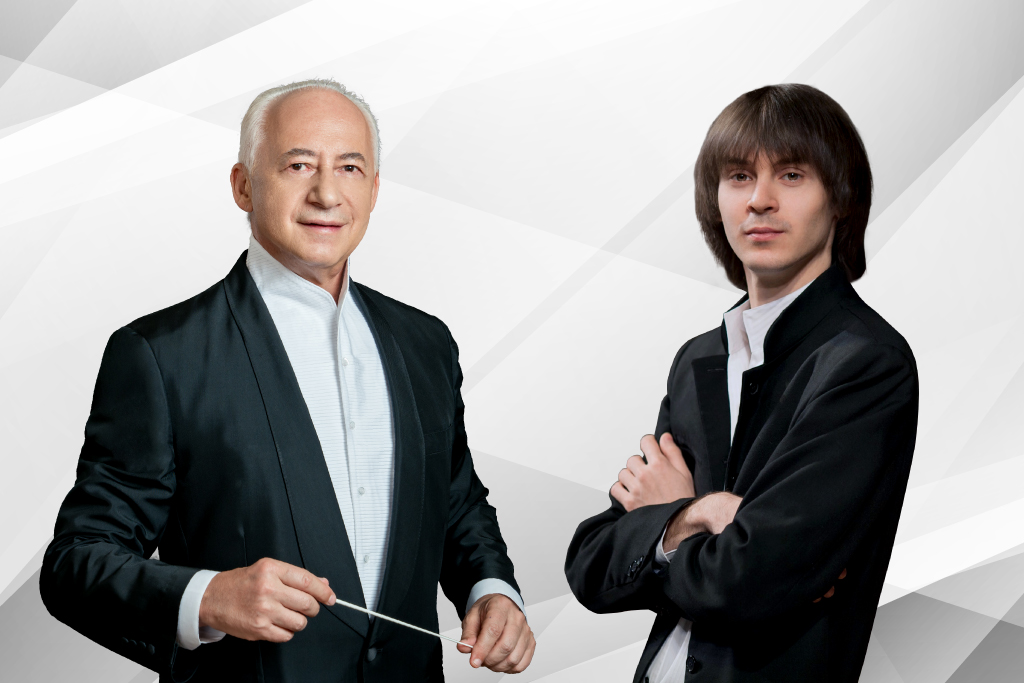May 21, 2023 | Zaryadye Concert Hall
Soloist – Philipp Kopachevsky, piano
Conductor – Vladimir Spivakov
Rachmaninoff. Concerto No. 4 for piano and orchestra in G minor, Op. 40
Rachmaninoff. Symphony No. 3 in A minor, Op. 44
Vladimir Spivakov and the National Philharmonic Orchestra of Russia are continuing the concert series dedicated to Sergei Rachmaninoff's 150th anniversary with a monographic program in the Zaryadye Hall. It will feature the composer's later works – the Fourth Piano Concerto (with Philipp Kopachevsky as soloist) and the Third Symphony.
The Piano Concerto No. 4 (1926) was Rachmaninoff's first work written after he had left Russia in 1918. It was premiered in 1927 with the author at the piano and the Philadelphia Orchestra under the baton of Leopold Stokowski. The new opus got a lukewarm reception, which made the composer rework the score. In 1941, he presented to the audience's judgment a thoroughly redrawn version, appearing together with the Philadelphia Orchestra under Eugene Ormandi. In this new edition, the Fourth Concerto has appeared in the repertoire of many eminent pianists of the past and nowadays. In its style it is close to Rachmaninoff’s early works, however the virtuosic brilliance of the piano part, the scale of the opus and many other details bespeak a consummate master. One of the noticeable features of the Concerto is its nostalgic tone.
The night will end with the Third Symphony, the last of Rachmaninoff's symphonies, written in the 1936-1938 years and becoming one of his most loved. It encompassed the composer's thoughts about Russia, which he had left, and about himself torn from it. ''A composer's music ought to reflect his native country, his love, faith, books, paintings that have impressed him... I am a Russian composer; my country has formed my temperament and frame of mind. My music is a child of my temperament, hence it is Russian' – Rachmaninoff said in one of his latest interviews.
For his Third Symphony Rachmaninoff chose a three-movement structure subtly combining the lyrical adagio and the scherzo in the second movement. The first movement starts with an austere tune reminding of Russian old church chants. It sets the metaphoric format of the entire work and is turned into the main element in the whole musical pattern. It becomes opposed in the Finale by another canonic motto, that is the Dies irae sequence from the Roman Rite liturgy often used by Romanticism composers as a theme of doom. The motto used to be a kind of idée fixe for Rachmaninoff that had been chasing him since his youth and brought by him as direct or hidden citations into almost all his works of the later period.




